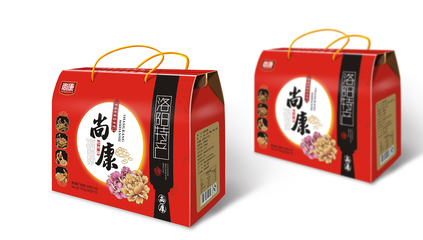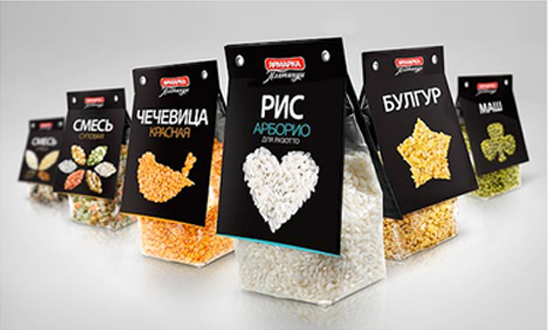The printing plastic bag material has the advantages of light weight, convenient transportation and sale, good chemical stability, easy processing and decoration, and good protection to food. However, there are still some questions about the cleanliness and safety. For example, the contamination on the outer surface of plastic packaging will lead to the contamination of food with dust and impurities. Plastic packaging materials themselves toxic monomer residue, toxic additive residue, etc. In addition, improper recall or disposal of packaging materials will lead to food contamination when reused. The packaging materials of plastic bags are being carried out in a pollution-free and safe direction.
1 Antibacterial membrane
The appearance of food reproduction microorganisms are the primary cause of metamorphosis. The inclusion of antimicrobial enzyme preparations or other substances in the packaging data can greatly improve the storage period of foods. Antibacterial membranes are typical of this type of data. If bioenzymes can be added to the wrapping paper and packaging film, they can have the functions of oxidation, sterilization, and delaying the rate of enzyme reaction in food; In addition, bioenzymes can also be made into preservatives, alone or mixed into food containers, to reach the intention of extending the shelf life of food. The commonly used enzyme preparations in food packaging are glucose oxidase and lysozyme. The former's biggest role in food preservation and packaging is to remove oxygen and extend the food shelf life; The latter acts primarily as a preservative and suppresses bacteria. Antibacterial substances such as silver and copper ions, quaternary ammonium salts, lactobacillus peptides, and cycresol can also be added to the packaging data. For example, in Japan, a series of antibacterial packaging materials were successfully developed using a silver zeolite antibacterial membrane as a material. It has antibacterial effect on various pathogenic bacteria. The primary characteristics of the packaging data are as follows: The antibacterial effect continues for a long time, because the antibacterial agent is gas-phase, so there is no adverse effect on the contents, and the stability is good; In the process of packaging processing, the thermal stability is high, the concentration is stable, and there is no adverse effect on the working environment. The antimicrobial packaging data is now widely used in antimicrobial packaging films, in
The Russian Institute of Useful Materials Skills has recently developed food packaging that can absorb water, sterilize and repeatedly use it, so that simple metamorphosis foods such as cheese sausages can be preserved for longer periods of time. Russian experts added dehydrated mineral salts and enzymes to food packaging polymers. The inner surface of the bag, which is rich in these substances, absorbs the remaining water, kills bacteria, and then improves the internal environment of the bag. In other things, the enzymes in the increase can also regulate the smell of the food.
Recently, a special film that can detect bacteria has been developed abroad. That is, a special coating is applied to the outer surface of a general food packaging film to make it have a special function of detecting bacteria. A detection film used for raw meat packaging. If the packaged meat food is no longer fresh and the harmful bacterial content exceeds the food cleaning standards, packaging with this thin film will make the otherwise transparent and colorless packaging film a warning color., so that customers immediately know that they can not be eaten.
2 high barrier films
High-barrier thin films are formed by extruding data with strong gas barrier and polyolefins with strong thermal stitching and moisture barrier. They are multilayer membranes. The use of high barrier films can avoid microbial reproduction caused by the leaching of oxygen and other gases; Avoid oxidation of contents caused by oxygen immersion; Avoid the outflow of fragrance, solvents, etc., and improve the storage of content.
It is mainly used for the packaging of meat processing commodities(ham, sausage, fresh fish Jelly, clam slices), raw meat, cheese, salad dressing, sauces, agricultural products, and seafood processing products.
3 Composite plastic data
American researchers have developed an easily differentiated corn plastic packaging material. It extracts three genes that can produce plastics from bacteria that make biopolymers, and then transfers them to rapeseed plants. After a period of time, a plastic polymer liquid occurs. After processing, it can be obtained. A rapeseed plastic. Food packaging materials made from this plastic processing can be discarded and differentiated without contamination residue.
And wheat plastic. This is the use of wheat flour to increase glycerol, glycol, polysilicon oil and other mixed boring, and then through the heat pressure into translucent thermal plastic plastic film. The advantage of packaging food with wheat plastic is that it can be differentiated by microorganisms.
British researchers have recently developed a PHB bacterial plastic. It is a bacteria that is first cultivated with sugar and then processed to produce data similar to polypropylene. This information is non-toxic and easy to biodifferentiate. It is an ideal material for processing and manufacturing food bags. There's no environmental pollution when they're dumped together.
All in all, the trend of the newly developed soft packaging materials for food at home and abroad is toward high performance, non-toxic, harmless, green, easy to use, and safe, and together with the launch of new packaging materials, it simultaneously launches its recovery and reuse skills. Minimize damage to the ecological environment by packaging.








